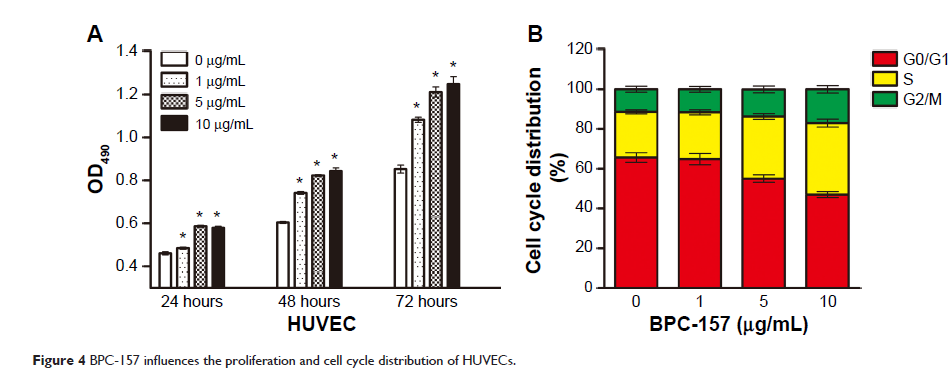9 7 6 4 1
论文已发表
注册即可获取德孚的最新动态
IF 收录期刊
- 3.3 Breast Cancer (Dove Med Press)
- 3.4 Clin Epidemiol
- 2.5 Cancer Manag Res
- 2.9 Infect Drug Resist
- 3.5 Clin Interv Aging
- 4.7 Drug Des Dev Ther
- 2.7 Int J Chronic Obstr
- 6.6 Int J Nanomed
- 2.5 Int J Women's Health
- 2.5 Neuropsych Dis Treat
- 2.7 OncoTargets Ther
- 2.0 Patient Prefer Adher
- 2.3 Ther Clin Risk Manag
- 2.5 J Pain Res
- 2.8 Diabet Metab Synd Ob
- 2.8 Psychol Res Behav Ma
- 3.0 Nat Sci Sleep
- 1.8 Pharmgenomics Pers Med
- 2.7 Risk Manag Healthc Policy
- 4.2 J Inflamm Res
- 2.1 Int J Gen Med
- 4.2 J Hepatocell Carcinoma
- 3.7 J Asthma Allergy
- 1.9 Clin Cosmet Investig Dermatol
- 2.7 J Multidiscip Healthc

已发表论文
人体防护复合物-157 可增强碱烧伤创面体内愈合、促进细胞增殖、迁移和体外血管生成
Authors Huang T, Zhang K, Sun L, Xue X, Zhang C, Shu Z, Mu N, Gu J, Zhang W, Wang Y, Zhang Y, Zhang W
Published Date April 2015 Volume 2015:9 Pages 2485—2499
DOI http://dx.doi.org/10.2147/DDDT.S82030
Received 2 February 2015, Accepted 10 March 2015, Published 30 April 2015
Abstract: Chemical burns take up a high proportion of burns admissions and can
penetrate deep into tissues. Various reagents have been applied in the
treatment of skin chemical burns; however, no optimal reagent for skin chemical
burns currently exists. The present study investigated the effect of topical
body protective compound (BPC)-157 treatment on skin wound healing, using an
alkali burn rat model. Topical treatment with BPC-157 was shown to accelerate
wound closure following an alkali burn. Histological examination of skin
sections with hematoxylin–eosin and Masson staining showed better granulation
tissue formation, reepithelialization, dermal remodeling, and a higher extent
of collagen deposition when compared to the model control group on the 18th day
postwounding. BPC-157 could promote vascular endothelial growth factor
expression in wounded skin tissues. Furthermore,
3-(4,5-dimethylthiazol-2-yl)-2,5-diphenyltetrazolium bromide and cell cycle
analysis demonstrated that BPC-157 enhanced the proliferation of human
umbilical vein endothelial cells (HUVECs). Transwell assay and wound healing
assay showed that BPC-157 significantly promoted migration of HUVECs. We also
observed that BPC-157 upregulated the expression of VEGF-a and accelerated
vascular tube formation in vitro. Moreover, further studies suggested that
BPC-157 regulated the phosphorylation level of extracellular signal-regulated
kinases 1 and 2 (ERK1/2) as well as its downstream targets, including c-Fos,
c-Jun, and Egr-1, which are key molecules involved in cell growth, migration,
and angiogenesis. Altogether, our results indicated that BPC-157 treatment may
accelerate wound healing in a model of alkali burn-induced skin injury. The
therapeutic mechanism may be associated with accelerated granulation tissue
formation, reepithelialization, dermal remodeling, and collagen deposition
through ERK1/2 signaling pathway.
Keywords: pentadecapeptide BPC-157, wound healing, human umbilical vein endothelial cells, ERK1/2 signaling pathway
Keywords: pentadecapeptide BPC-157, wound healing, human umbilical vein endothelial cells, ERK1/2 signaling pathway
